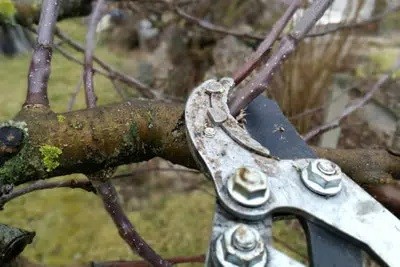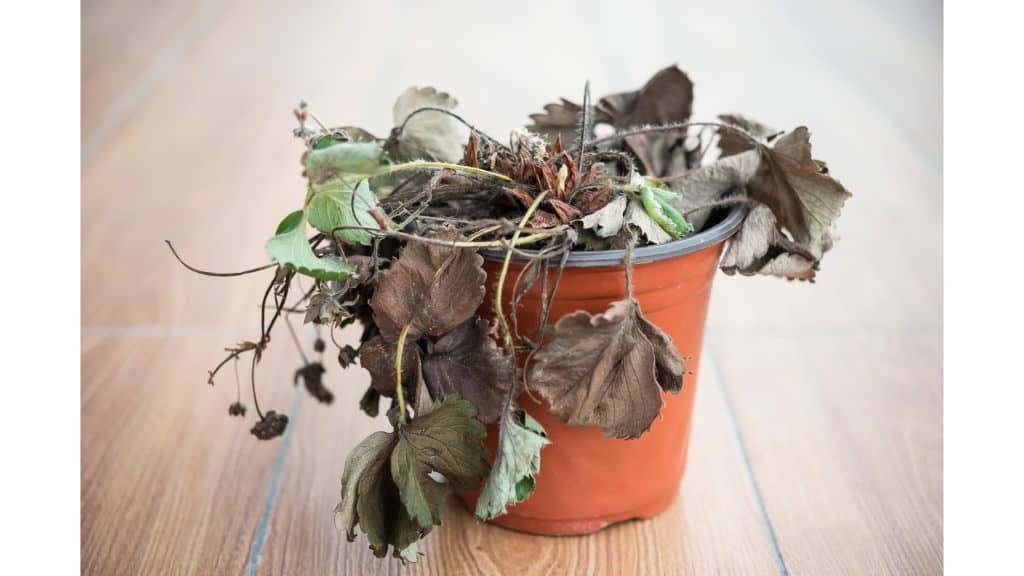Appearances can sometimes be deceptive. If a withered plant seems lost to us, there may nevertheless be a remnant of life slumbering deep inside it. No one has to give up their favorite plant until everything possible has been done to save it. But how does one determine whether hoping is really appropriate? And more importantly, what can quickly help the plant out of this life-threatening situation?
Contents
- 1 Appearances are sometimes deceptive
- 2 Test: Is the plant still alive?
- 3 Why do plants dry out in the first place?
- 4 Conditions for a rescue
- 5 Step 1: Supply with water
- 6 Step 2: Repot in fresh substrate.
- 7 Step 3: Carry out pruning
- 8 Step 4: Find a more suitable location
- 9 Step 5: Provide abundant nutrients
- 10 Save withered plants in the bed
- 11 Save a dry lawn
- 12 Prevent rather than save
- 13 Conclusion
- 14 Author
Appearances are sometimes deceptive
When a plant shows the first yellow or withered leaf, withering can continue at breakneck speed. So fast that the owner, perhaps helpless, does not immediately know how to save it, and therefore hesitates. In no time, almost the entire plant has turned yellow.
You may also return from vacation and be saddened to find that one of your plants does not seem to have survived the absence.
In both cases, it may well be that nothing can save the affected plant. But outward appearances can also be very deceiving. Deep inside the plant, in the branches, trunk or root ball, there is still slumbering a driving force sufficient for the formation of new shoots. For this to happen, however, something decisive usually has to change in its current living conditions.
Test: Is the plant still alive?
The plant itself gives us some clues that can be interpreted as signs of life.
- Despite dried branches, the trunk is still moist
- Underneath the bark is green (scratch it with a knife)
- leaves are yellow but not completely dried up
- fallen leaves are still green
- Flowers hang dormant and leaves curl up
A dead plant cannot be brought back to life. But if any of the listed signs are spotted, nurturing might be worthwhile. It is important to know what can bring the desired success, instead of blindly doing something.
Why do plants dry out in the first place?
Green, plump leaves and yellow, withered leaves differ mainly in one respect: their water content. While the cells of green leaves are filled with water, withered leaves obviously suffer from a deficiency. Photosynthesis cannot take place, and the plant dies.
But what has led to this lack of water? The cause must be found, so that its elimination will again lead to the optimal supply of the plant. There may be several reasons why the natural water cycle does not function smoothly or even at all.
- watered too little
- watering was done at the wrong time
- a hot spell has affected the water balance
- the roots are damaged and consequently the water absorption is disturbed
- the plant has been pruned too much
- the container may be leaking
Conditions for a rescue
First check whether the roots of the plant are largely undamaged. They are its water supply organs, without which no water can reach the above-ground parts of the plant. Annuals that have been badly affected can only be recovered with difficulty. They usually have to be discarded.
Perennial plants with intact roots can often be saved by a combination of several measures. These also depend on the extent to which or which cause for the withering could be clearly identified. The sensible sequence of steps can also vary or individual steps can be omitted. Tip: Also clarify whether diseases or pests were at work and, for example, damaged the roots. If so, salvage is only feasible if these are also combated
Step 1: Supply with water
Reaching into the pot quickly brings clarity as to whether the substrate has dried out. Instead of giving the plant a load of water in the pot now, you should proceed as follows when lovingly feeding it up:
- Fill a large bucket with water, the flower pot should fit in it.
- Immerse the plant in the bucket so that the entire pot is covered with water. If the pot does not have bottom holes, then take the plant out beforehand and put it “naked” in the bucket.
- Leave the plant in it so that the soil can soak up water.
- Get the pot or plant out as soon as air bubbles stop rising.
- A plant that has taken the water bath without a pot should be allowed to air dry before being returned to the pot.
Tip: Do not leave the plant in the water for more than a full day, as prolonged moisture will damage the roots
Step 2: Repot in fresh substrate.
A completely dry soil loses part of its ability to store precious water. As a result, you will have to reach for the watering can more often in the future. It is much more practical to provide the damaged plant with a fresh substrate and save it in this way. An earthenware pot that can store moisture in its walls is a good alternative to a plastic planter. It also provides better aeration of the soil.
Step 3: Carry out pruning

In order that the weakened plant does not exhaust itself with the care of numerous shoots, its energy should be directed to the main shoots. This is done by radically cutting away other shoots with secateurs. Dried up parts of the plant must be removed near the trunk anyway.
Step 4: Find a more suitable location
A new location can also save the plant. Above all, it is important to protect it from too much sunlight. It promotes evaporation and the high temperatures mean increased stress for the plant. However, it does not need this in its weakened situation.
If you can’t find a shady spot, at least provide adequate protection from the sun. How exactly this is done is left to your own creativity or depends on the local conditions. Stretching a sun sail over the plant is one of many possibilities.
Step 5: Provide abundant nutrients
The almost withered plant needs plenty of energy and building materials to form new, healthy shoots. These should be provided to it now by giving it a suitable fertilizer. The more parts of the plant that have withered, the more it will need to be supplied with nutrients.
In the case of slightly withered plants, unscheduled fertilization can be dispensed with.
Save withered plants in the bed
Bedding plants are firmly bound to their dwelling. Simply repotting is not so easily possible here. It is also impossible to think about moving them to another location. Usually several plants are affected by the drought at the same time.
Small plantlets can be carefully dug up and saved as described earlier for potted plants. Large plants must remain in place, but do not have to be abandoned to their fate.
- Use pruning shears to remove any dried plant parts.
- Loosen the soil around the trunk.
- Water the plants abundantly and directly near the roots.
- Keep up the copious watering for several consecutive days.
- Cover the root area with a thick layer of mulch to retain moisture in the soil.
- In sunny locations, place a sun shade for the affected plants.
Save a dry lawn
Every year in the summer, the otherwise green lawn is partially yellowed or even dried up over a large area. Of course, unless watering was adjusted due to weather conditions. But don’t worry, the grass roots find some protection from sunlight deep in the soil and are also extremely robust. As soon as water approaches again, they sprout fresh green. But no one should wait for the next big rainfall.
- Water the lawn extensively twice a day
- several days in a row until the lawn responds with recovery
- If there is no improvement in sight despite thorough watering, the soil should be loosened with the help of a scarifier. The roots can then better absorb water.
Tip: If scarifying leaves bare spots in the lawn, you can easily re-vegetate them with a few lawn seeds
Prevent rather than save
A successful rescue should not obscure the fact that the phase of withering has robbed the plant of a lot of vital energy and set it back considerably in its vitality. If possible, they should be spared this stress. To avoid the need for more life-sustaining measures in the future, you can prevent withering with the following tips:
- offer the optimal location from the beginning
- prevent with the fulfillment of all care requirements
- know and observe the water requirements of the plant variety
- water preferably in the early morning hours
- on hot days, increase the amount of watering as needed
- protect the top layer of soil from drying out with mulching
- ensure sufficient water supply during absence
- install automatic water supply if necessary
- Water the lawn not only superficially, but down to a depth of approx. 15 cm.
Conclusion
For a withered plant, any help seems to come too late. After all, everything visible is withered and little sign of life can be detected anymore. But the outer impression can be very deceiving. Deep inside it often still slumbers a spark of vitality. A bundle of measures can give it healthy green shoots again.










